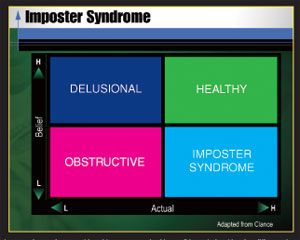 The greatest salespeople aren’t great because of their ability to handle when customers say “yes.” They are great because of their ability to handle what happens when they hear the word “no.”
The greatest salespeople aren’t great because of their ability to handle when customers say “yes.” They are great because of their ability to handle what happens when they hear the word “no.”
The difference is that successful salespeople either consciously or subconsciously have methods for bouncing back. Like a brand-new tennis ball ready for the next serve, they want back in the game. Unsuccessful salespeople respond like that old flat basketball that was always last on the rack in gym class. They hit the hardwood with a thud and are immediately kicked to the side of the court.
The notion that sales success is often found in rejection can be a fairly depressing thought. But what if:
• You were able to more easily overcome rejection?
• You could hear the word “no” and not take it personally?
• There was a method scientifically proven to have the same antidepressant effects on your mental condition as pharmaceuticals, but didn’t require you to take a pill?
When you make an “ask” (requesting some commitment or decision of someone), you are putting yourself out there. You are taking a risk. For some, this makes them as nervous as Lindsay Lohan at a meeting with her parole officer. The following will help you minimize that risk, calm your nerves and steamroll through those inevitable times of rejection.
Minimize Rejection
Start with less risky situations and settings. If you want to experiment with a 99.9 percent extended service plan logic argument and you’ve never done it before, don’t try it out on your most cantankerous customer, an off day or when you really need to make the sale because your mortgage is due. Practice it on friends and family first and then find that customer with whom you have a great relationship and say, “Let me run something by you …” A rookie pitcher’s first game is never in the World Series.
Always go into every “ask” with options. It’s best to avoid a take-it-or-leave-it stance. Always have a good, better or best option. This way, it’s not whether someone takes you up on your offer, it’s how they take you up on your offer. It doesn’t matter if you’re talking motorcycles, jackets or an employee performance review, you can come up with options for everything.
Start with your more extreme offer. If you do they may just take you up on it. And if so, that’s frosting on the beer mug for you. If they don’t, you can leverage a concept known as rejection, then retreat. When someone says “no” to your offer, you simply retreat within your offer to your next option. Studies prove people are much more likely to say “yes” to your next option because they feel you’ve made a concession to them by making a smaller subsequent offer.
Don’t ask for the business. Yep, you read that right. The reason 62 percent of all retail sales aren’t consummated is because the salesperson doesn’t ask for the sale. Why don’t they ask for the business? They’re afraid they will get turned down. So, don’t ask for the business. Ask for the customer’s opinion first. It’s easy, much less threatening and will tell you whether you should move forward in your sales progression. At an appropriate moment simply ask the customer, “What do you think?” If they hesitate, keep working. If they say, “I like it,” ask for the commitment.
Practice these tactics to minimize rejection and stay tuned for next month’s installment where we’ll dig deeper into dealing with rejection.
Imposter Syndrome
In 1985, Dr. Pauline Rose Clance published a book called The Imposter Phenomenon in which she described how highly successful people battle with feelings of inferiority. Successful executives, professional athletes and others of note, all at one time or another feel as if someone will find out they aren’t as good as they are made out to be. This is a mental condition, which hinders talent and contributions.
If you were to compare your belief about your performance to your actual performance you may make some interesting discoveries. (See Imposter Syndrome Chart, Right) If you think your good at something and you’re not, that might classify a person as delusional (not necessarily in the One Flew Over the Cuckoo’s Nest sense). If you are not good at something and you don’t think you’re good at it, you’ve got a self-inflicted impediment. If you’re good at something, but walk around on eggshells as if someone’s about to play the ace, you’re experiencing the Imposter Syndrome (which most people have felt this way at least once). If you’re good at something and you know you’re good at something, this can create a healthy confident mindset (there’s a difference between confidence and arrogance).













